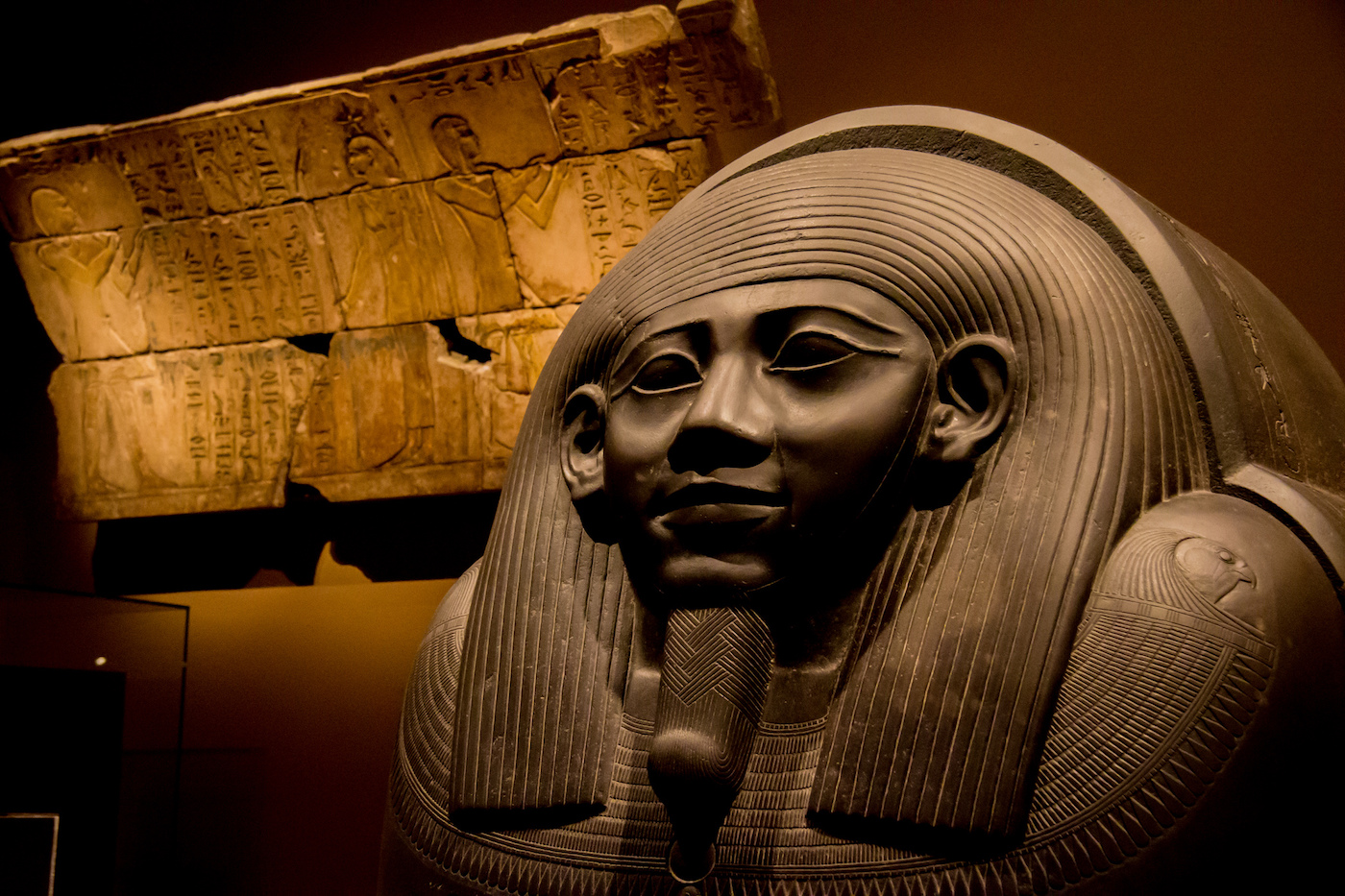 Evolution & Behaviour
Evolution & Behaviour
Ancient Egyptian mummies give up the last of their secrets
History books tell us about how ancient populations developed to be the modern world that we are living in. Ancient DNA can provide us with a broader picture of the interactions that led to modern populations: a precious snapshot delivered directly by Egyptian mummies.

Our group together with an international team of scientists successfully recovered and analyzed ancient DNA from Egyptian mummies dating from approximately 1400 BC to 400 AD, establishing ancient Egyptian mummies as a reliable source for genetic material to study the ancient past. The study, published in Nature Communications, found that modern Egyptians share more ancestry with Sub-Saharan Africans than ancient Egyptians did, whereas ancient Egyptians were found to be most closely related to ancient people from the Near East.
Ancient Egypt conjures up images of pyramids and pharaohs, vast deserts and the lush Nile River. Egypt has long been an area of intense study, with a rich and well-documented history that has been exhaustively studied through archaeology. Monumental architecture, lavish tombs, beautiful hieroglyphic texts -- these have all contributed to our modern understanding of, and fascination with, Ancient Egypt. However, for understanding the people that created this ancient culture and their genetic relationship to other populations one important component has been missing - reliable ancient DNA.
Ancient Egyptian mummies could provide a source for the retrieval of ancient DNA, though genetic studies of these mummies have been hampered by bad preservation and contamination with modern human DNA. Although some of the first extractions of ancient DNA were from mummified remains, scientists have raised doubts as to whether genetic data, especially nuclear genome data, from mummies would be reliable, even if it could be recovered. The hot Egyptian climate, the high humidity levels in many tombs and some of the chemicals used in mummification techniques contribute to DNA degradation and are thought to make the long-term survival of DNA in Egyptian mummies unlikely. To face the general skepticism regarding the potential preservation of DNA our team used rigorous methods such as strict contamination tests and chemical modifications typical for ancient DNA to ensure that the DNA recovered was authentic.
We sampled 151 mummified individuals from the archaeological site of Abusir el-Meleq, along the Nile River in Middle Egypt. In total, we recovered mitochondrial genomes from 90 individuals, and genome-wide datasets from three individuals. We were able to use the data gathered to test previous hypotheses drawn from archaeological and historical data, and from studies of modern DNA.
In particular, we were interested in looking at changes and continuities in the genetic makeup of the ancient inhabitants of Abusir el-Meleq. We tried to determine whether the repeated conquests and domination by Alexander the Great and other foreign powers, including the Romans, Arabs, and Assyrians, had made an impact on the genetic structure of the ancient Egyptian population. Surprisingly, the Abusir el-Meleq community did not undergo any major genetic shifts during the 1,300 year timespan studied, suggesting that the population remained genetically relatively unaffected by foreign conquest and rule.
The study also found that ancient Egyptians were most closely related to contemporaneous ancient populations in the Levant, and were also closely related to even older populations from the Anatolian Peninsula and Europe. The data shows that modern Egyptians share approximately 8% more ancestry on the nuclear level with Sub-Saharan African populations than the ancient Egyptians. This suggests that an increase in Sub-Saharan African gene flow into Egypt occurred within the last 1,500 years. Possible causal factors may have been improved mobility down the Nile River, increased long-distance trade between Sub-Saharan Africa and Egypt, and the trans-Saharan slave trade that began approximately 1,500 years ago.
The success of this study countered prior skepticism about the possibility of recovering reliable ancient DNA from Egyptian mummies. The use of high-throughput DNA sequencing and robust authentication methods enabled us to overcome the potential issues of degradation and contamination caused by climate and mummification methods as well as to ensure the ancient origin and reliability of the data. The study thus shows that Egyptian mummies can be a reliable source of ancient DNA, and can greatly contribute to a more accurate and refined understanding of Egypt's population history.
Original Article:
V. J. Schuenemann et al., Ancient Egyptian mummy genomes suggest an increase of Sub-Saharan African ancestry in post-Roman periods. Nature Communications 8, 15694 (2017)Edited by:
Massimo Caine , Founder and Director
We thought you might like
GMOs are not a human invention: sweet potato is a naturally transgenic food crop
Jul 6, 2015 in Plant Biology | 3 min read by Tina KyndtA new code for a new life
May 26, 2016 in Maths, Physics & Chemistry | 3.5 min read by Jordan CostafrolazAmoebas trap bacteria using nets of DNA: the same mechanism as human immune cells
Jan 27, 2017 in Evolution & Behaviour | 3.5 min read by Lukáš NovákWhat happens to our genes in the twilight of death?
Feb 28, 2017 in Health & Physiology | 3.5 min read by Peter Noble , Alex PozhitkovMore from Evolution & Behaviour
Cicada emergence alters forest food webs
Jan 31, 2025 in Evolution & Behaviour | 3.5 min read by Martha Weiss , John LillSize does not matter: direct estimations of mutation rates in baleen whales
Jan 29, 2025 in Evolution & Behaviour | 4 min read by Marcos Suárez-MenéndezThe Claws and the Spear: New Evidence of Neanderthal-Cave Lion Interactions
Jan 22, 2025 in Evolution & Behaviour | 3.5 min read by Gabriele RussoA deep-sea spa: the key to the pearl octopus’ success
Jan 20, 2025 in Evolution & Behaviour | 3.5 min read by Jim BarryFeisty fish and birds with attitude: Why does evolution not lead to identical individuals?
Aug 31, 2024 in Evolution & Behaviour | 3 min read by Lukas Eigentler , Klaus Reinhold , David KikuchiEditor's picks
Trending now
Popular topics


